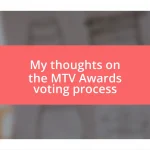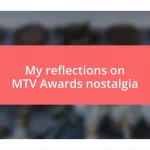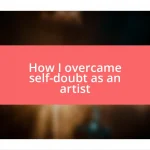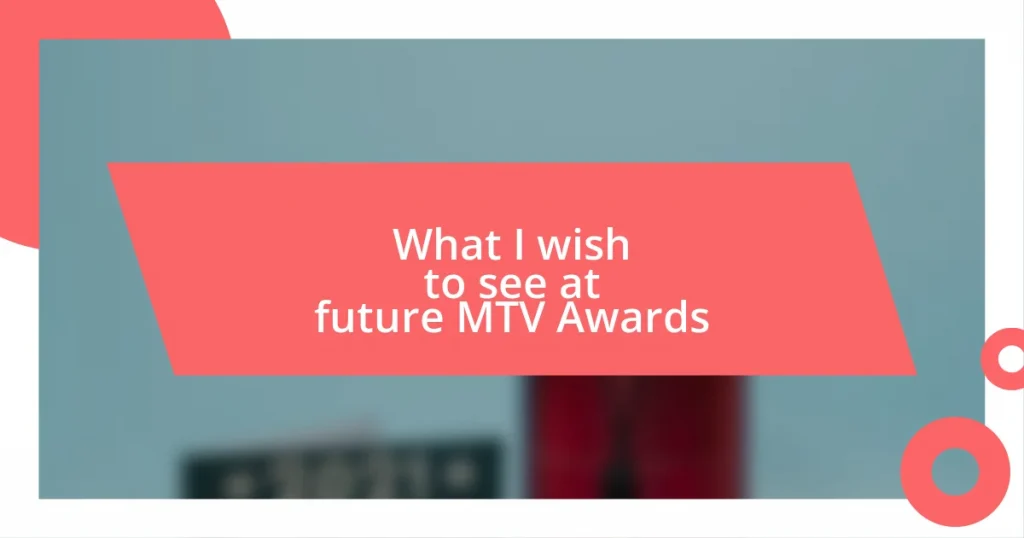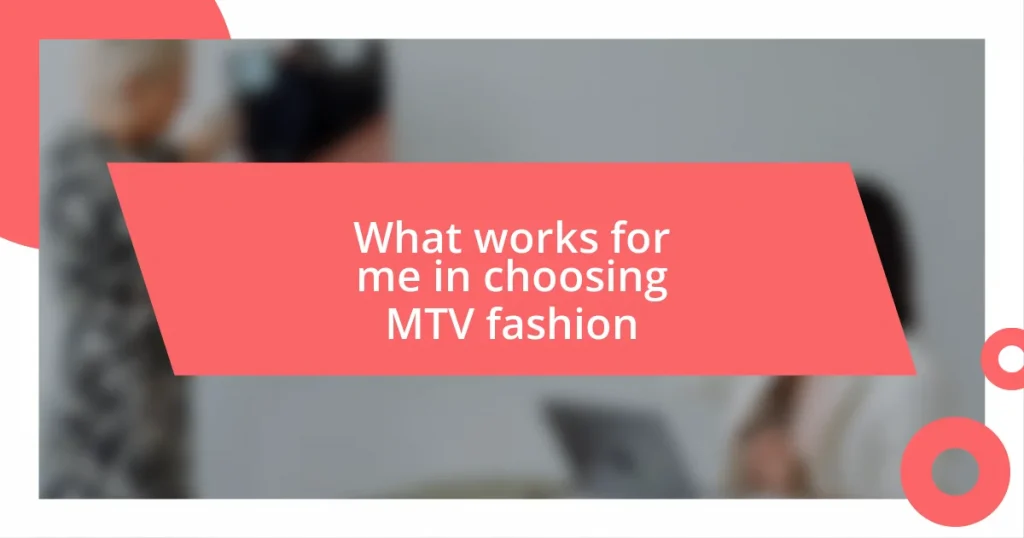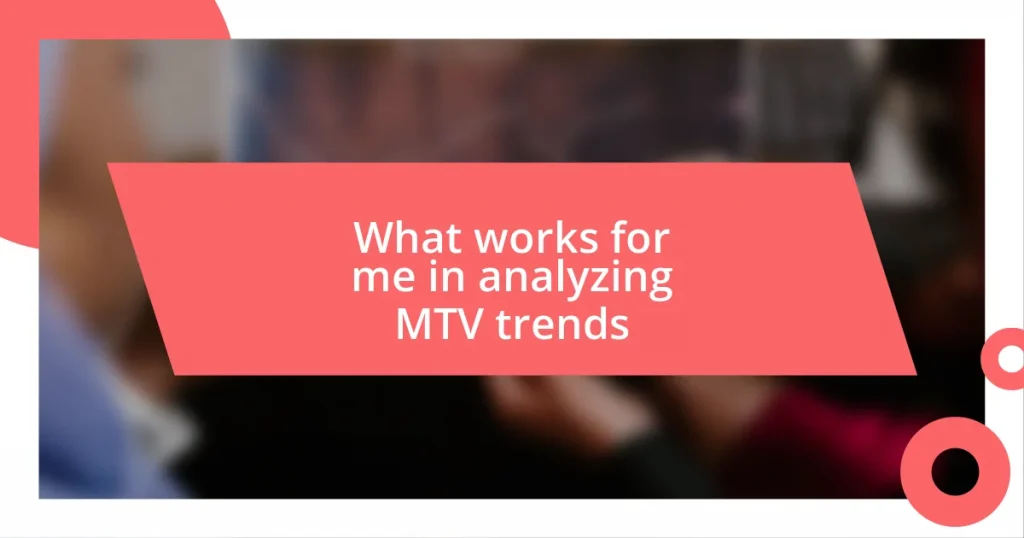Key takeaways:
- Creative block stems from self-doubt and environmental distractions; recognizing and understanding personal triggers can help overcome it.
- Effective coping strategies include free writing, physical activity, and collaboration, which can stimulate creativity and provide fresh perspectives.
- Building a supportive environment and establishing a routine while allowing for flexibility fosters creativity and promotes personal growth.
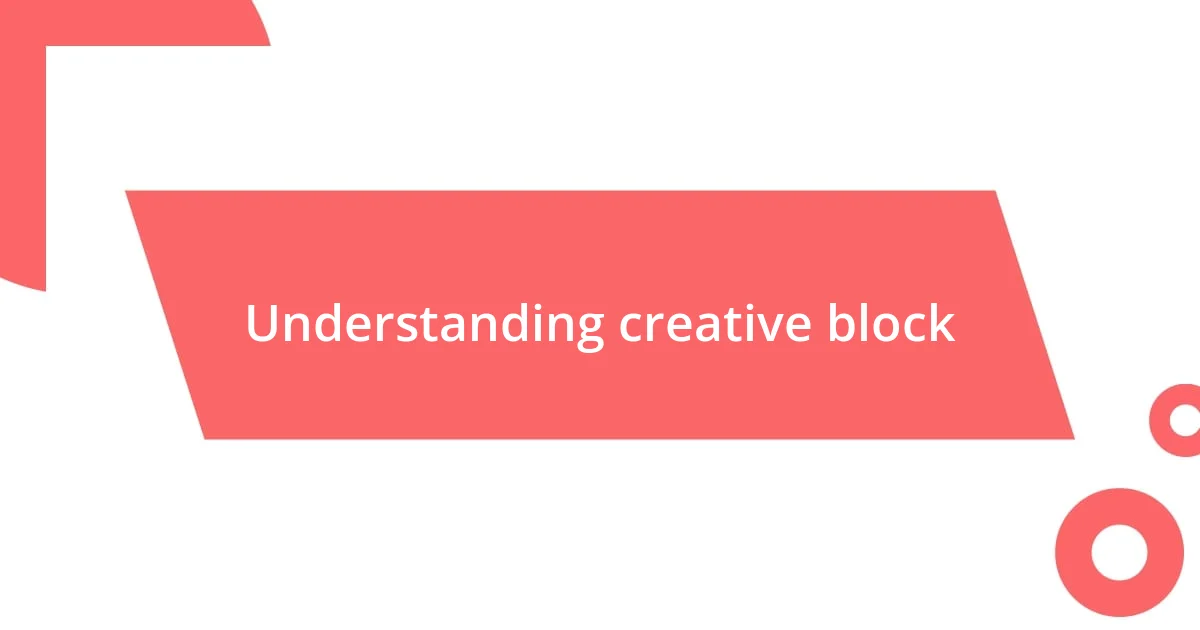
Understanding creative block
Creative block can feel like an invisible barrier, a frustrating pause that halts our thoughts. I remember a phase in my life when I’d sit at my desk, staring blankly at a canvas, thoughts swirling but unable to take shape. It struck me then that creative block wasn’t just a lack of ideas; it was a disconnect from myself and my passion.
Have you ever felt that nagging sensation of self-doubt creeping in when you want to create? That moment when you wonder if your ideas are good enough can be paralyzing. For me, it was during a critical project deadline—every blank page became a reminder of my insecurities. In those moments, I learned that recognizing this self-imposed pressure was the first step to breaking free from the block.
Creative block can also be influenced by our external environment. I recall a time when I was overwhelmed with distractions, from buzzing notifications to background noise. It made me realize that sometimes, stepping back and changing my surroundings can spark inspiration. Isn’t it fascinating how a simple shift in our environment can potentially shift our mindset?
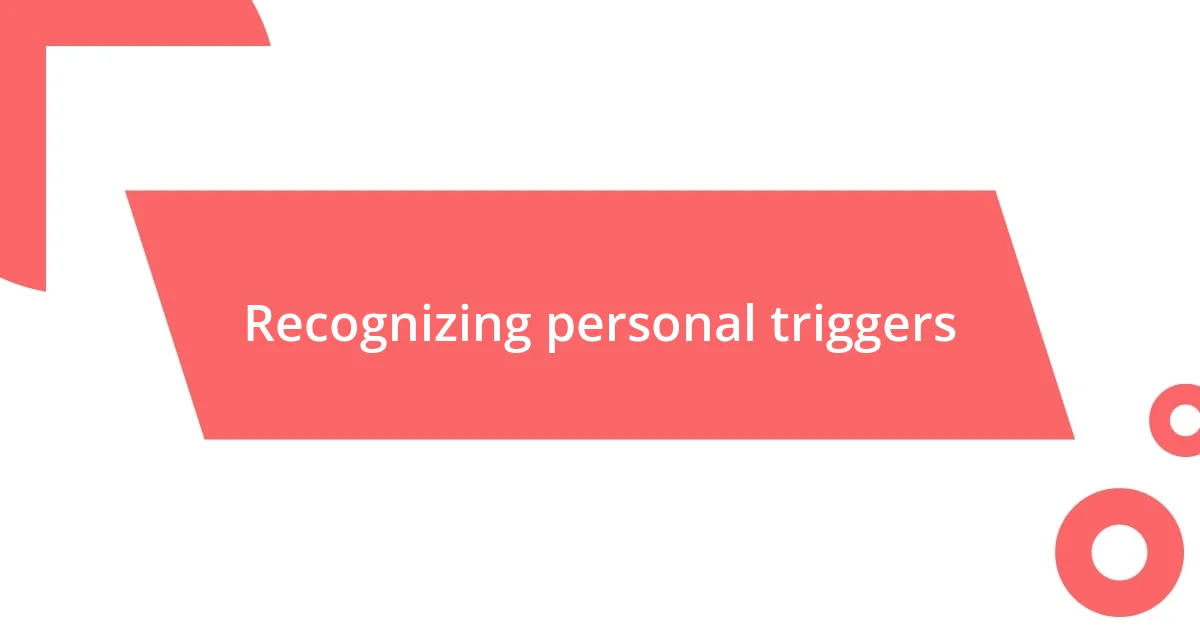
Recognizing personal triggers
Recognizing personal triggers is key to navigating the maze of creative block. I’ve learned through experience that specific situations and feelings can zap my motivation. For instance, I discovered that late nights often left me exhausted, with my creativity languishing like an untended garden. Identifying that exhaustion as a trigger empowered me to prioritize rest, nurturing my creative spirit instead.
To pinpoint your personal triggers, consider the following:
- Emotional states: Reflect on how feelings like stress or anxiety manifest in your creative process.
- Time of day: Notice if your creativity thrives at certain times, or if fatigue steals your inspiration.
- External distractions: Identify what tends to pull your focus away—social media, noise, or even the clutter around you.
- Past experiences: Think about previous projects where you felt stuck—what was happening in your life then?
- Your environment: Pay attention to how different spaces affect your creativity and concentration.
Understanding these patterns can transform your approach to creativity, allowing you to cultivate a more productive and fulfilling practice.
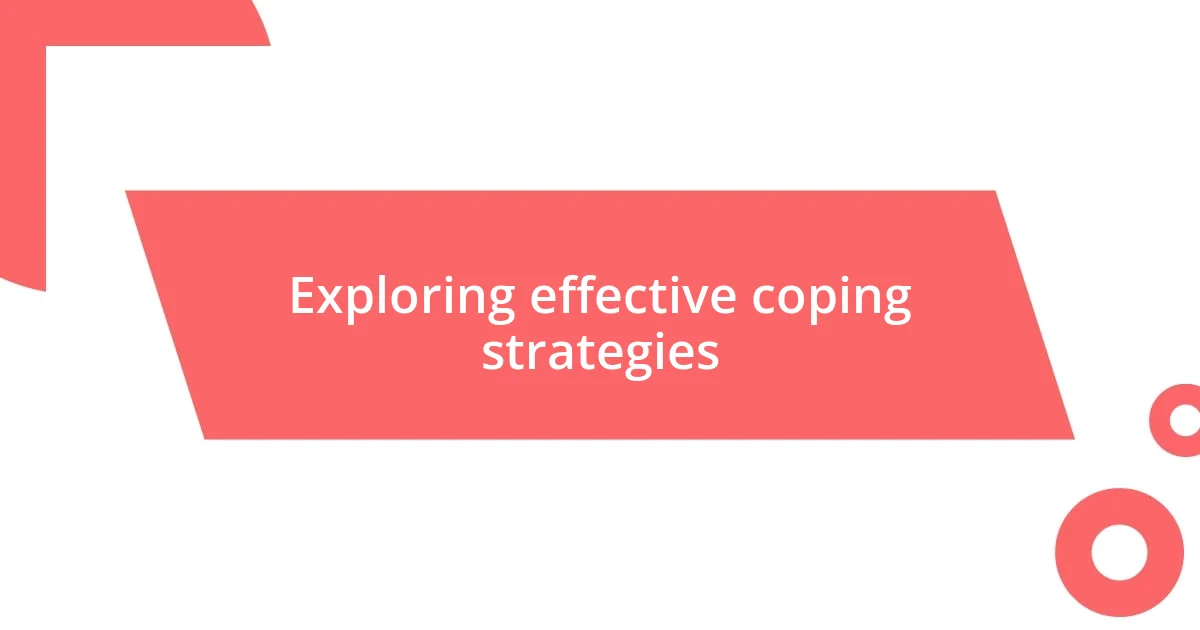
Exploring effective coping strategies
Exploring effective coping strategies is crucial when facing a creative block. One approach that has served me well is the practice of free writing. When I hit a wall, I often take a few moments to jot down my thoughts without any filter. This simple act can be quite liberating, allowing ideas to flow freely and often surprising me with unexpected insights. Have you ever tried this? The act of writing just for the sake of writing can be a powerful way to break through that creative fog.
Another strategy I’ve found helpful is engaging in physical activities, like going for a walk or practicing yoga. I remember a particularly stubborn block, where I felt stagnant while working on an illustration. After a brisk walk in the park, my mind cleared, and I returned with fresh energy, ready to tackle my art. It’s remarkable how movement can stimulate mental creativity. Have you noticed how a change of pace can invigorate your thinking?
Lastly, I swear by the power of collaboration. Sometimes, bouncing ideas off a friend or fellow creator can shift my perspective entirely. There was a period when I collaborated with a musician, and discussing our different approaches not only helped me regain my own flow but also ignited a spark of inspiration I didn’t realize I was missing. Isn’t it interesting how connecting with others can serve as a catalyst for personal creativity?
| Coping Strategy | Description |
|---|---|
| Free Writing | Journaling thoughts without constraints to uncover new ideas. |
| Physical Activity | Engaging in movement to refresh the mind and body. |
| Collaboration | Sharing ideas with others to gain fresh perspectives and inspiration. |
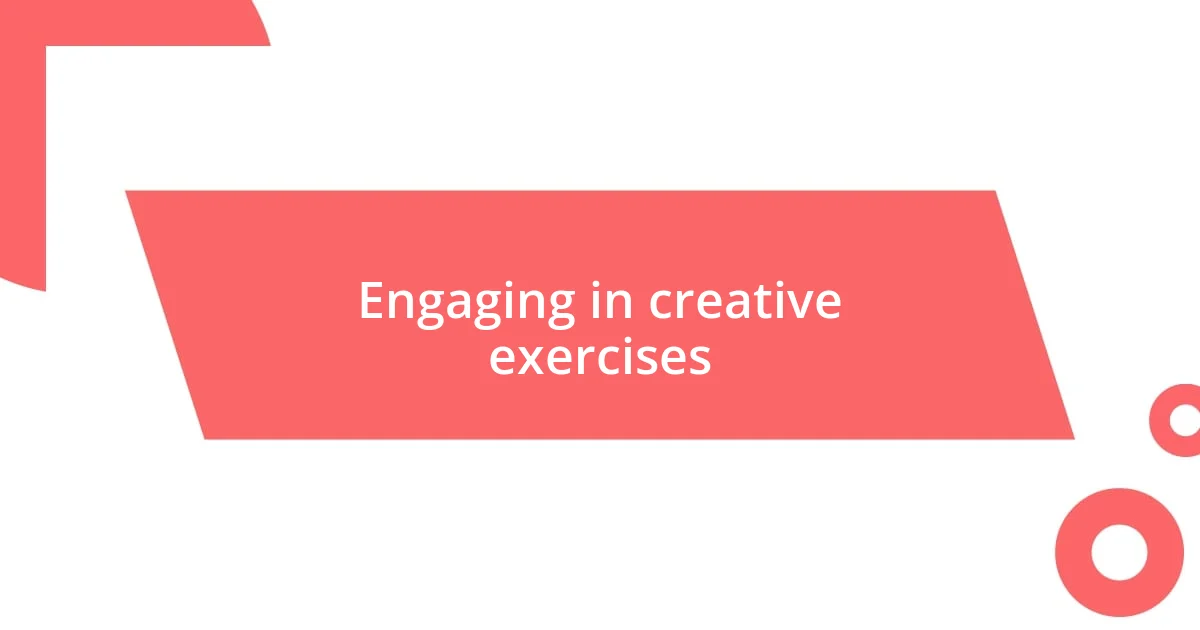
Engaging in creative exercises
Engaging in creative exercises can be a game-changer when navigating through those frustrating blocks. For me, one of the most effective exercises is setting aside time for a “brain dump.” I grab a piece of paper and let my thoughts spill out—no judgments, just raw ideas. It often leads to unexpected connections and puts me back in touch with what truly inspires me. Have you ever allowed yourself to just think freely and see what emerges?
Another technique that revitalizes my creativity involves experimenting with different mediums. Once, feeling stuck while writing, I decided to try my hand at painting instead. Although I’m not a painter, I surrendered to the joy of color and form, letting my instincts guide me. It opened up a pathway of creativity I hadn’t anticipated, igniting inspiration for my writing. Have you explored creative outlets outside your usual practice? You might discover something that reignites your passion.
I also find value in taking a step back and engaging in playful activities. Recently, I picked up adult coloring books to use those creative muscles without the pressure of a specific outcome. The act of coloring can be meditative and often sparks new ideas in its simplicity. When was the last time you let yourself play without boundaries? Embracing this lighthearted approach can sometimes reignite the fire within, sparking a flood of innovative thoughts.
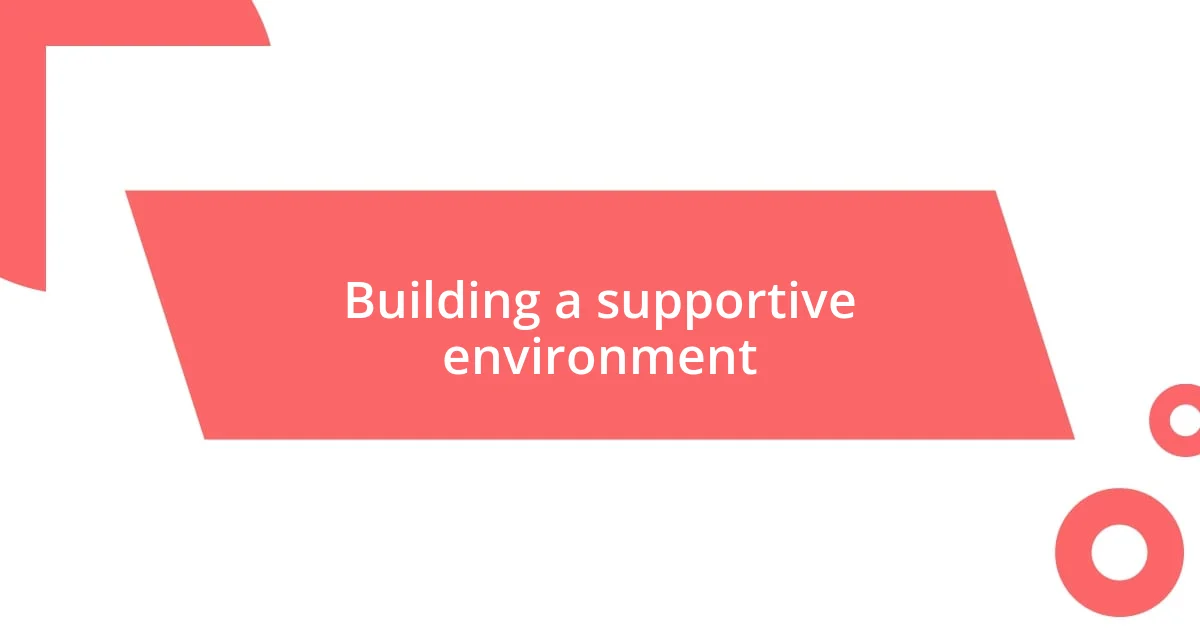
Building a supportive environment
Creating a supportive environment is essential for nurturing creativity. I’ve learned that surrounding myself with encouraging people makes a world of difference. When I was struggling with a recent project, a supportive friend invited me to a local art show. Just being in a community of creators cheered me on and reminded me of why I love art in the first place. Have you ever noticed how being around like-minded individuals can lift your spirits?
I’ve also found that setting up a dedicated workspace contributes to this supportive atmosphere. For me, organizing my desk and surrounding it with inspiring artwork or personal artifacts creates a visual reminder of my journey and ambitions. When I step into that space, it feels like entering a creative sanctuary. Is your workspace reflecting what you want to achieve, or does it create distractions instead?
Moreover, I believe incorporating affirmations into my daily routine adds a layer of support that’s invaluable. I’ve started taking a moment each morning to remind myself of my talents and potential. It sounds simple, but those few words can shift my mindset dramatically. By affirming my journey, I feed my confidence and creativity. Have you tried positive affirmations in your life? They might just be the boost you need to overcome that creative block.
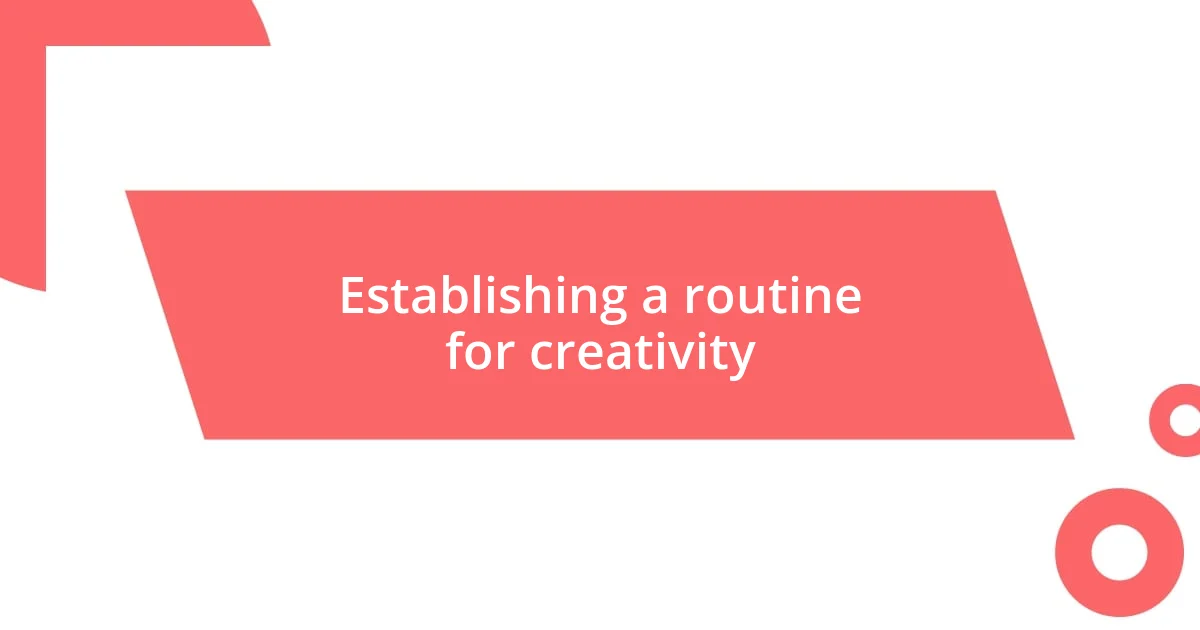
Establishing a routine for creativity
Establishing a routine for creativity can feel daunting, but I’ve found it can truly help in overcoming those blocks. For me, starting my day with a designated time for creative work sets a positive tone. I wake up, brew my coffee, and carve out at least thirty minutes for writing or brainstorming. This consistent practice has turned into a ritual that primes my mind for creativity. Have you noticed how routines can ground you, making it easier to tap into your creative well?
When I think about my most productive times, creating a specific environment is key. I’ve dedicated a cozy corner in my home as my “creativity nook,” filled with plants and a soft blanket. Just being in that space triggers inspiration, making it so much easier for me to dive into my work. I wonder if having a designated zone could help you spark your creativity. Isn’t it amazing how our surroundings can influence our mindset?
I also believe in the power of flexibility within a routine. Yes, it’s important to have structure, but I’ve learned to listen to my creative instincts. On days when I feel particularly uninspired, I allow myself the freedom to explore other artistic outlets, like cooking or journaling, instead of forcing creativity in my usual way. This adaptability keeps the creativity flowing, instead of feeling like a chore. What about you—do you make space for spontaneity in your creative journey? Finding a balance can truly enhance your artistic expression.
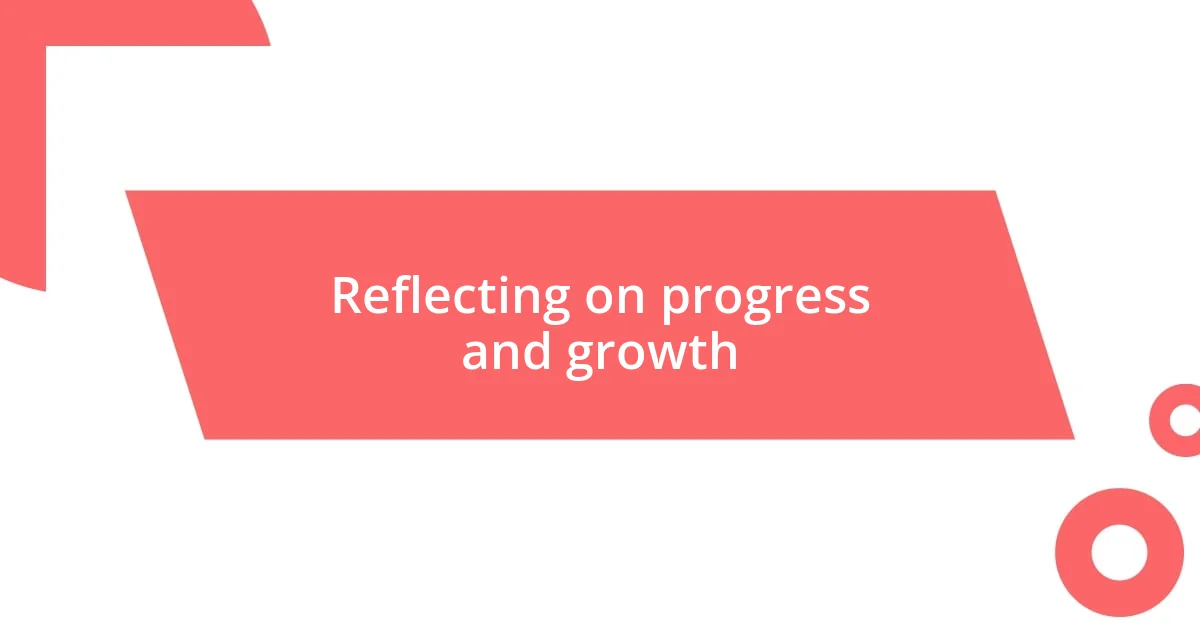
Reflecting on progress and growth
Reflecting on my progress and growth has become an essential part of my creative journey. I remember the days when each brushstroke felt heavy and uncertain, but now, I look back and see how those struggles shaped me. It’s almost like I can feel the weight of those blocks lifting and being replaced with newfound confidence. Can you recall a moment where your persistence led to unexpected growth?
One of the most profound insights I’ve gained comes from keeping a creative journal. I started this practice during a particularly tough phase, where words felt like stones. But by jotting down small wins, breakthroughs, or even just thoughts, I could see a pattern of progress emerge. Reviewing those entries fills me with gratitude and a sense of achievement—every sentence is a testament to my resilience. Have you ever attempted such a personal reflection? It might surprise you to recognize your own growth when you lay it all out on the page.
Moreover, I’ve learned to celebrate the small victories along the way. Recently, I completed a piece that I initially doubted I could even start. The feeling of holding my finished creation was exhilarating! It reminded me that every step, no matter how small, is part of a larger journey. How often do we pause to acknowledge our own achievements? I believe that recognizing these moments fuels our passion and reinforces the commitment to our creative path. It’s those reflections that ultimately help us overcome creative blocks and embrace our growth.







